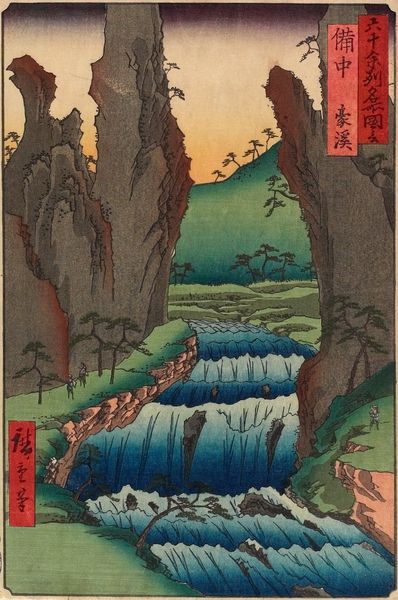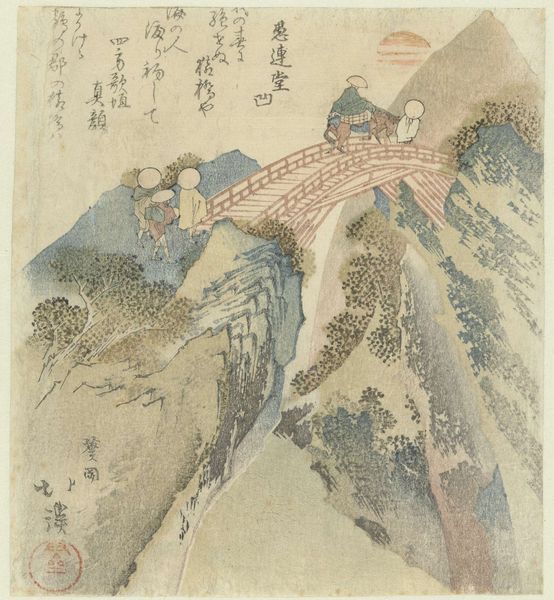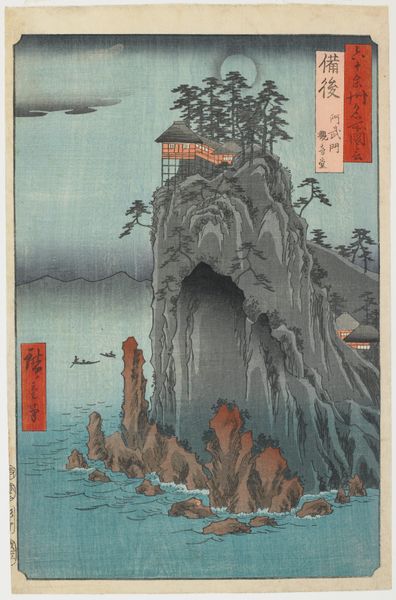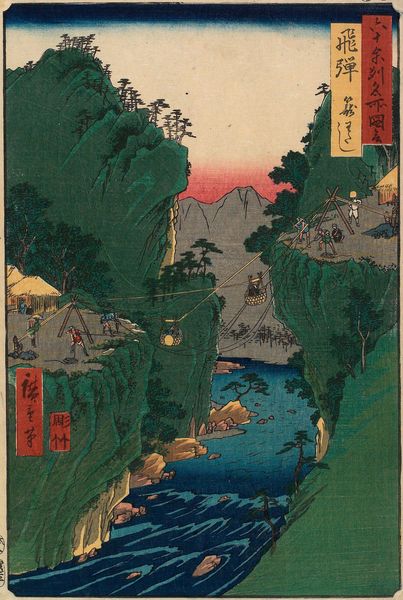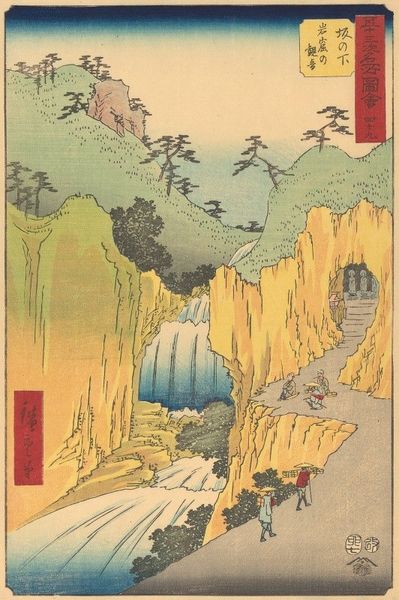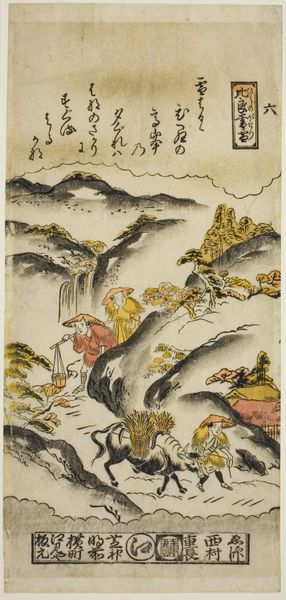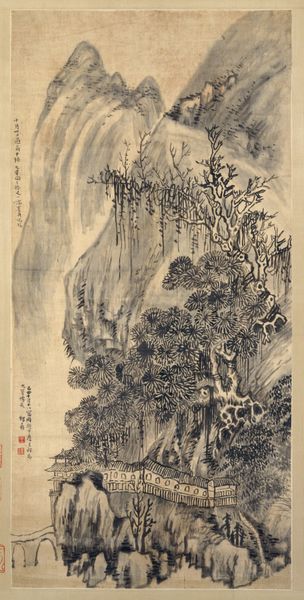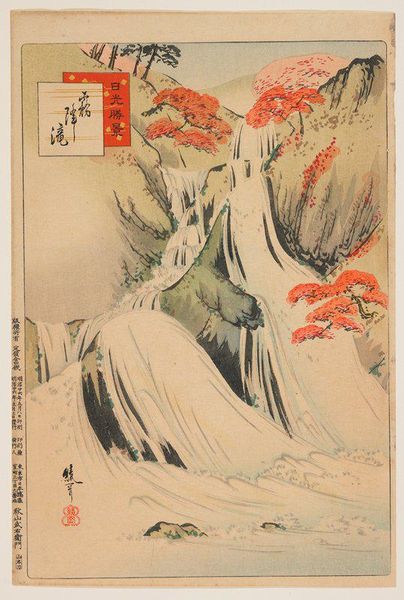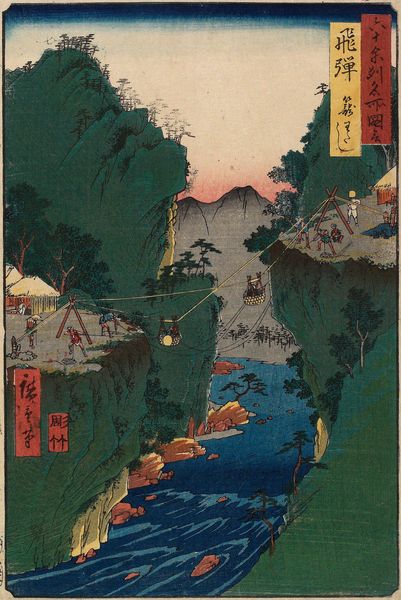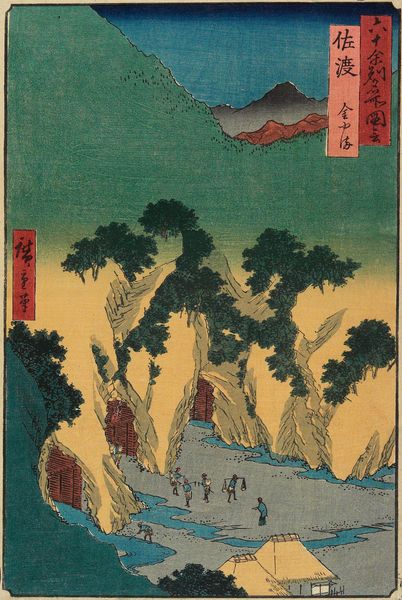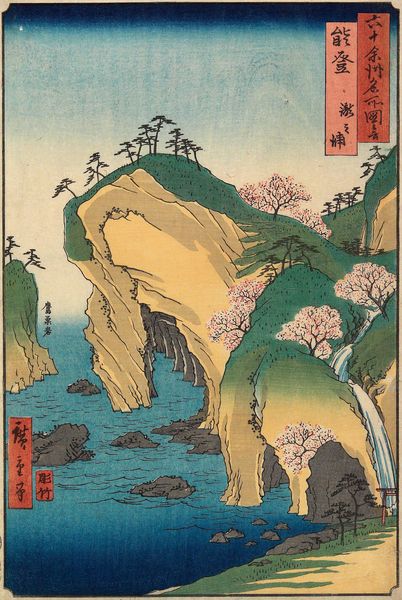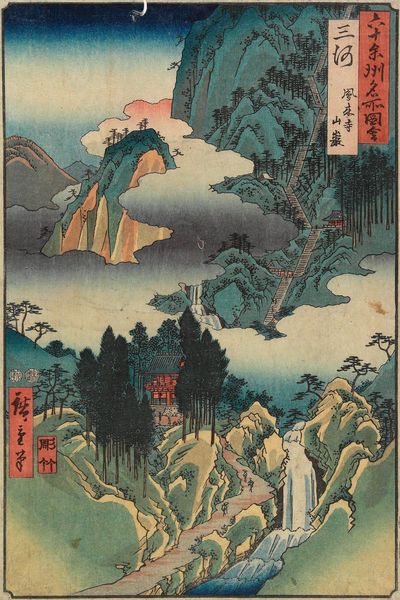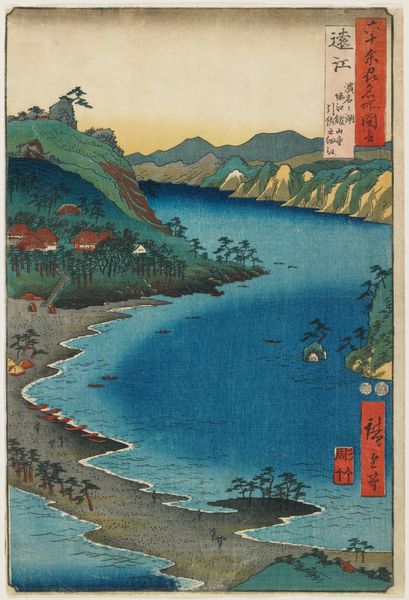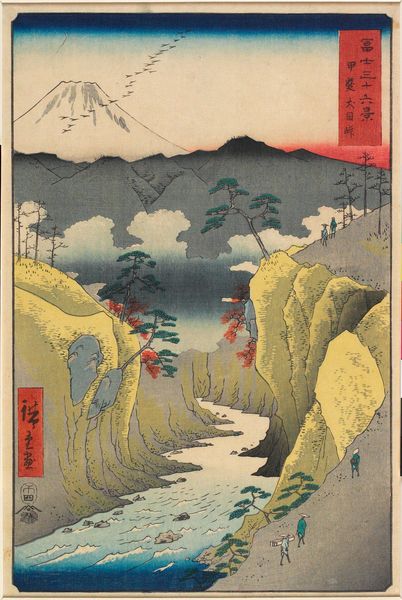
print, woodblock-print
# print
#
asian-art
#
landscape
#
ukiyo-e
#
woodblock-print
Dimensions: H. 13 1/2 in. (34.3 cm); W. 8 11/16 in. (22.1 cm)
Copyright: Public Domain
Curator: Let’s explore "Kegon Waterfall," a woodblock print by Keisai Eisen, who worked roughly between 1790 and 1848. This work is held at The Met. It really captures the drama of nature, doesn't it? Editor: It does. It feels…overwhelming. The height of the waterfall is exaggerated, creating this sense of the insignificance of the human figures clinging to the cliffside. A reminder of nature’s power, and perhaps our own precarious position. Curator: Precisely. Ukiyo-e prints like this weren't just aesthetic objects; they served as a kind of mass media. This work depicts Kegon Falls, which became a really popular subject for artists after it was “discovered” by Westerners, showcasing a natural wonder of Japan to the world. How do you think the historical context is revealed in the scene? Editor: Knowing that shifts my perception. Are those observers then…Westerners? The print seems to present an orientalist lens for foreign viewers to see an untouched landscape. Curator: Well, more likely Japanese tourists than westerners, but Ukiyo-e definitely capitalized on representing famous spots for visitors and the rising tourism market. Beyond the landscape itself, you have to look at its role within the booming print industry of the era. The lines and blocks were all designed to be reproduced, allowing a piece of this spectacular nature to be taken home and consumed. Editor: I am curious, what message, or experience was supposed to be imparted when consuming and reproducing such imagery, how were people supposed to react when observing nature so intensely through the lens of the rising tourism culture? Curator: That is certainly the open question that art, in it's creation and consumption, tries to resolve. The waterfall itself, with the frothy, dynamic movement suggested by the strokes, would carry the experience from reality into artistic consumption, a piece of landscape one can own without ownership, something available to be visually owned. Editor: Very much in line with mass tourism. To bring a moment home through reproduced visual experience, it takes a lot of emotional processing. The human relationship with nature is never simple, this piece captures it so vividly. Curator: Absolutely, I concur with you, and that idea of emotional processing as the point to the interaction is well received here, the artistic consumption has given us plenty to discuss for a time.
Comments
No comments
Be the first to comment and join the conversation on the ultimate creative platform.
